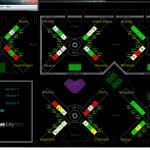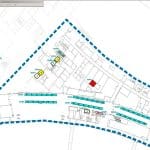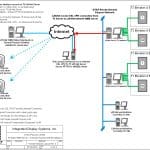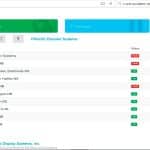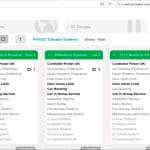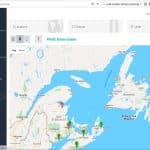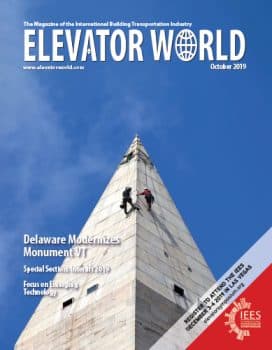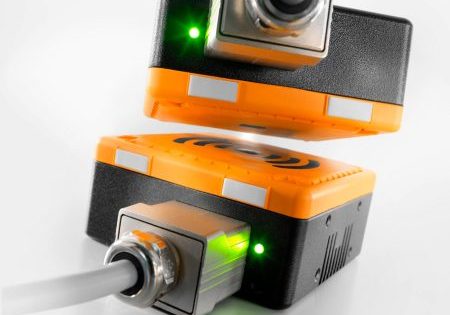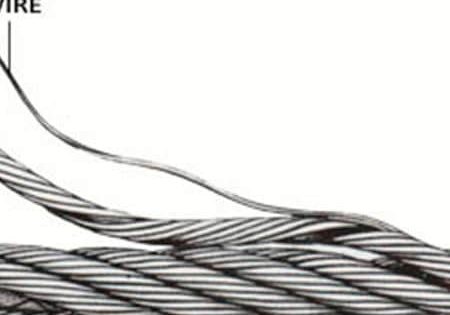This Product Spotlight describes passenger conveyance management systems with IoT from IDS/Lift-Net.
Modern building management requires real-time information collection (and, sometimes, emergency control) of passenger conveyance systems. This data is essential for passenger safety, building security and equipment reliability. Not only do we need to know the position and current real-time status of all equipment, in many instances management also needs to have certain controls. These data-access and control functions are often provided on workstations local to a particular building and, increasingly, over a wider area. With networked Internet of Things (IoT) devices, this capability extends to an entire campus, or even an entire portfolio, encompassing a large geographical region. Management is also expecting conveyance systems to integrate with other building automation and management systems (BAMS), such as Maximo, to document operations and automate work-order generation and other management functions. This technology has been previously available in certain systems, though typically only to large manufacturers. Emerging systems are now making its features available even to smaller contractors.
Traffic and Fault Analysis and Reports
Interactive management systems can provide a traffic-predictive environment by monitoring and controlling functions such as parking, zoning and other similar functions. These can be adjusted manually or automated in a timer-based schedule to accommodate anticipated traffic patterns.
Interactive management systems can provide a fault-and-maintenance-predictive environment by monitoring, recording and analyzing fault occurrence and duration. This data can provide timeframes for more efficient maintenance schedules by anticipating the need for maintenance before a breakdown requires it.
The modern monitoring and management system will track, record and report on up-to-the-minute movement, status changes and faults. This data is stored and can be recalled, exported and replayed as desired for any arbitrary time and date. Specific events can be analyzed, even well after the fact. The system will provide immediate and historical statistics on traffic, car/group service, handling/carrying capacity, wait times, distribution and traffic summaries. Customizable report types, including graph and spreadsheet formats, allow system overview and performance at a glance.
Control Features
Building management is now requesting standard control features and customized functions, such as flood/hurricane service, jail service, judge’s car, baby abduction, secured lobby, riot control, active shooter and secured hall and car calls. These features allow management to customize operation and predetermine how the equipment reacts under various conditions, sometimes simply for convenience, but also for emergency operation and response.
Integration With Building Automation and Security
Conveyance management systems are expected to send a subset of the conveyance equipment real-time data to external third-party BAMS and other automated work-order systems. In addition, conveyance systems must have increasingly complex integrations with security-control systems, often using emerging biometric authorization and cameras.
Integrated Display Systems (IDS)/Lift-Net™ strives to rapidly make IoT technologies available to the passenger conveyance industry. This information can be local to a building, networked around a campus or made available on secured connections anywhere over the internet.
Lift-Net communicates with most manufacturers’ elevators, escalators or moving walks using prearranged serial data communication protocols. The Lift-Net serial protocol, which was developed and published by IDS specifically for this purpose, is used most frequently. Other data protocols as desired by the OEM are sometimes used. The communications may be implemented over a variety of physical media, including rs232, rs422/485 over twisted pair, and Ethernet or Token-Ring via TCP/IP or UDP connections. Lift-Net hardware-interface panels may also be used to connect older relay-based equipment on a point-to-point basis. Lift-Net communicates with various third-party building automation and security systems using OPC, BACNet TCP, Modbus and other standard BMS protocols. Custom database integrations are often required, as well.
Because such a wide variety of information and features is available from the system to all users with the correct authority, even at remote locations, the return on investment of a Lift-Net system should be realized faster.
Figures 1 and 2 are display images available from standard Lift-Net workstation screens.
Lift-Net Web Services
Many Lift-Net installations are implemented over very high security — so-called “air gap” networks. In these installations, such as in airports and military, transit and government facilities, no chance of outside infiltration can be tolerated, and internet connection to the outside is prohibited. As we move forward, however, with better tools and more robust protocols, more of our customers are recognizing the very real benefits of having the appropriate personnel be in touch with their conveyance systems, regardless of their physical location.
Those using Lift-Net web and IoT services are provided a special login on our secure HTTPS website. The Lift-Net computer on a web customer’s site will open a secure outbound connection using a special encrypted tunnel developed by IDS to our leased servers on the internet. The secure leased server will then send the real-time, service-mode and fault data to the customer’s individual pages on the Lift-Net website to be viewed using their secure login.
The web-services information is displayed on standard web browsers and is implemented with provisions for smartphone and tablet screen sizes, as well. Java and other plugins are not required to view the information. Data obtained from a wide variety of equipment is “normalized,” so all equipment appears standard to the user. Modern web tools (such as a Structured Query Language database) and display devices (such as dashboards and other drill-down devices [Figures 4 and 5]) are provided. Complete scalable Global Positioning System mapping display (Figure 6), including fault indication, is also provided.
With its mouse-over feature, Lift-Net will identify each device and operating and fault status simply by moving the mouse over the specific device. Finally, all levels of interaction to the system are controlled by password access. Specific profiles allow various levels of access and control. This allows user tracking to specific time and date, while limiting access to features to authorized personnel. www.liftnet.com
- Figure 1: Workstation screens in lobbies, management offices and security rooms in a multiple-high-rise building complex
- Figure 2: Typical airport or transit installation sectional screen showing elevators, escalators and moving walks: workstations are in the elevator service office and operations command and security rooms
- Figure 3: Simplified schematic of a LiftNet web and IoT services installation
- Figure 4: The dashboard menu structure allows easy fault indication of each building.
- Figure 5: Drill-down to view real-time operational status of all units
- Figure 6: Geographic location display of units allows instant notice of faults and statuses of both groups and individual units.
Get more of Elevator World. Sign up for our free e-newsletter.
